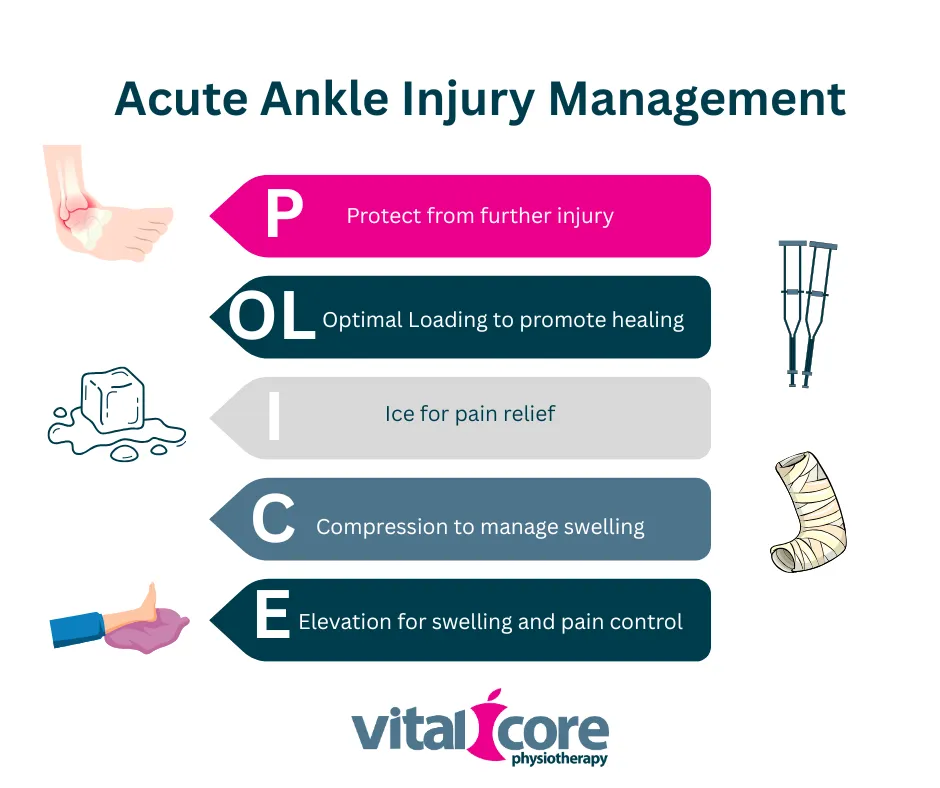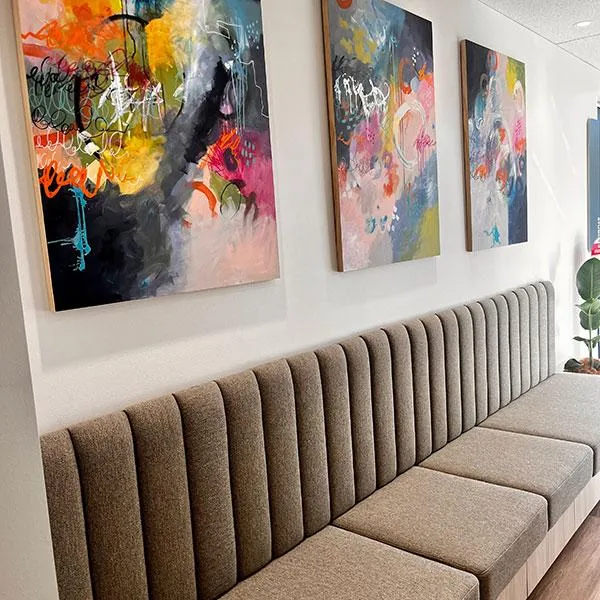
Ankle sprain recovery
Ankles and their ligaments are incredible! They allow us to move with grace and power in different directions, but sometimes, we push them a bit too far and this can lead to injury to the ligaments and sometimes the joint itself. Lateral ankle sprains (LAS) are common, often dismissed as minor or as 'just a stinger', yet they can have long-term consequences, especially for young athletes when they are not managed well. Let's explore how to care for and recover from these common sprains to ensure a swift return to the game.
The impact of LAS
LAS results from excessive force on an inturned ankle, often during sports but can easily happen stepping off a curb of an unseen pothole in the grass.
In sports the common ways this can occur includes by landing awkwardly or on another players foot, or suddenly changing direction at speed. When this happens, the ankle rolls outwards and the outer ankle complex of ligaments takes the hit, causing pain, swelling, and reduced stability. Most of us who have played court or field sport know the sting of an ankle sprain. It can be overwhelming, literally flooring us.
For the young athlete it can be the worst pain they have ever experienced and they often react in blind panic. Often their panic causes the people around them to panic as well, escalating the traumatic experience.
This is important to note. As the adult, we can change the experience right here by how we react. Instead of feeding into the panic what if we could calm the situation down? Research shows that we can significantly impact how a child experiences and then remembers an injury by how we (the people around them) react. So staying calm is super important and helping them to be calm is also important. As they calm the experience of pain can also decrease.
What to do?
After the initial injury, the first step is to STOP. There is an old sportsman rule that after an ankle injury if it's mild you can head straight back out on the court or field. This is fraught with risk. If you roll your ankle and it hurts like crazy, you just have to call it a day. You're injured and you need to come off and start looking after it.
Immediate Care with P.O.L.I.C.E
The initial moments after an LAS can be stressful. Don't panic!
Follow the P.O.L.I.C.E principles:
Protect the area,
Optimal Loading (guided by a physio),
Ice for pain relief,
Compression with a bandage, and
Elevation to manage swelling.
You may have heard of the discussion about the use of ice and the use of anti-inflammatories such as nurofen after an injury. There is good evidence that the use of anti-inflammatory medication in the acute phase (48-72 hours after injury) can actually DELAY healing. This is because the inflammatory process is a very important part of healing. Anti-inflammatories can also lead to further 'bleeding' in the medium term which can actually make the whole area more swollen and bruised. So avoiding nurofen and voltaren in the first 48-72 hour period is preferred.
Ice has been included in this recommendation by some as it too has been considered 'antiinflammatory'. The main use of ice is actually in pain management. Its use is also very short term - it only works for the period or immediately after it has been applied. It doesn't cause bleeding generally either. Therefore, I still recommend it's use for lateral ankle sprains.
To Image or Not to Image?
While X-rays might be necessary for severe cases, following recommended protocols like the Ottawa ankle rules is crucial. Because most people have not got the training to apply these protocol, a good rule of thumb is, if in an hour the injured person is not able to walk 4-5 steps without extreme pain, a trip to the ED is appropriate to rule out a fracture.
The Role of Moon-Boots and Crutches
Using moon-boots or crutches in the first 48 hours aids pain relief, but prolonged immobilisation delays recovery. Ligaments heal faster and stronger with gentle movement. Functional support like compression bandages, taping, or bracing as well as effective load management is often sufficient.
Physiotherapy role
It important to rehabilitate each and every ankle sprain. Ignoring these symptoms may lead to chronic ankle instability and recurrent injuries.
Physiotherapy is crucial for LAS recovery. Physios assess the injury's severity, offer tailored rehabilitation plans, and guide short- and long-term management. The key is early intervention to prevent prolonged issues or re-injury. Early exercises are essential for ankle movement and ligament healing. Simple activities like the ankle alphabet, sliding feet, weight-bearing, and squats gradually restore function and confidence.
A progressive exercise program, guided by a physio, ensures a competent return to sport. Building strength, balance, and coordination are vital for full recovery.
Returning to sport requires a phased approach, starting with drills and progressing to match play. Non-rigid ankle bracing is recommended to prevent recurrence, even up to a year after the injury.
Conclusion: Empowering Young Athletes
While LAS may seem minor, their impact on young athletes' confidence and performance is significant. Seeking professional help early ensures a safe and speedy return to the sports they love. Don't underestimate the power of proper ankle care!
Ask a question of Vital Core Physiotherapy
Fill in the form to request a Call From Our Team
One of our team will call you for FREE and answer any questions or concerns you may have about your condition
© 2023 Vital Core Physiotherapy





